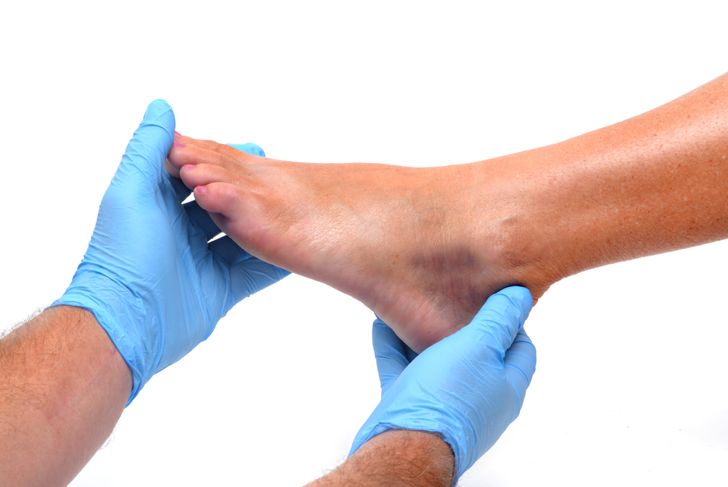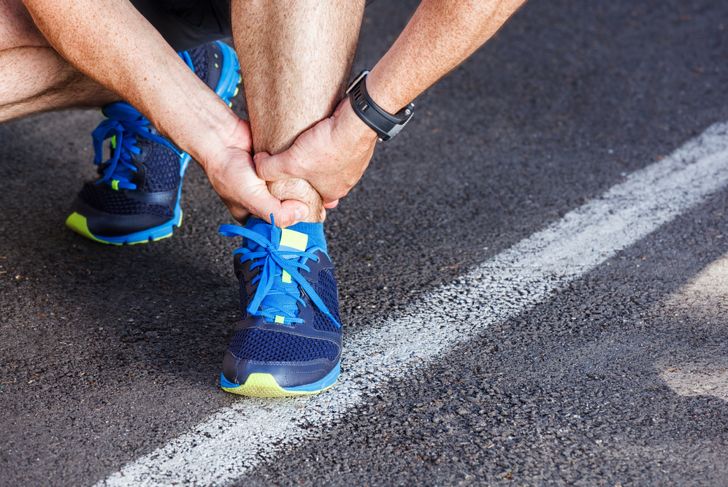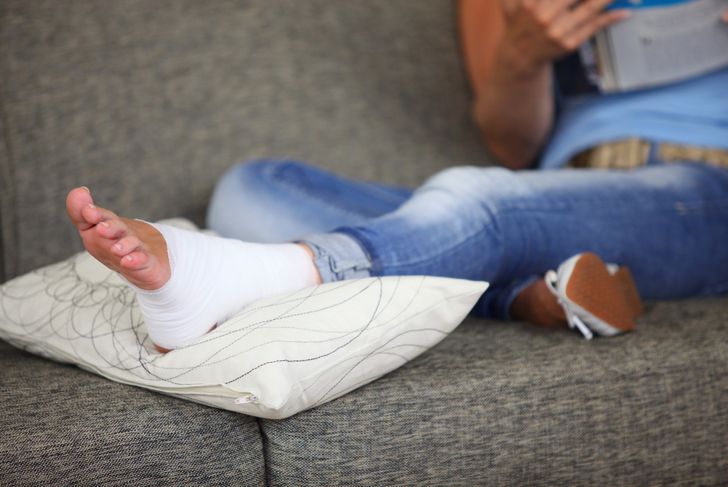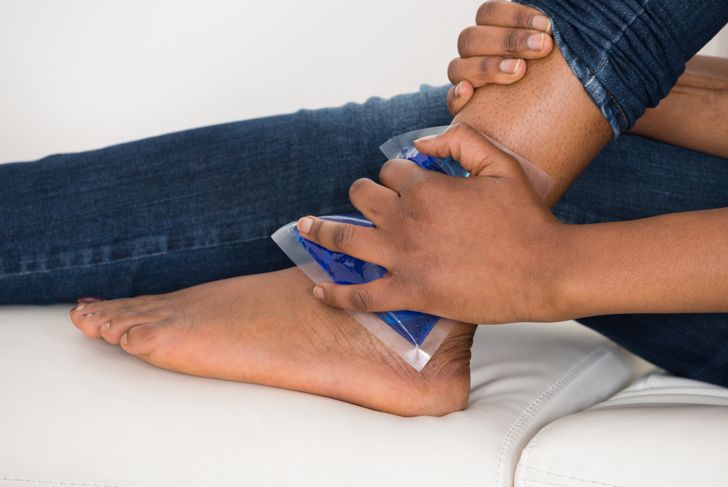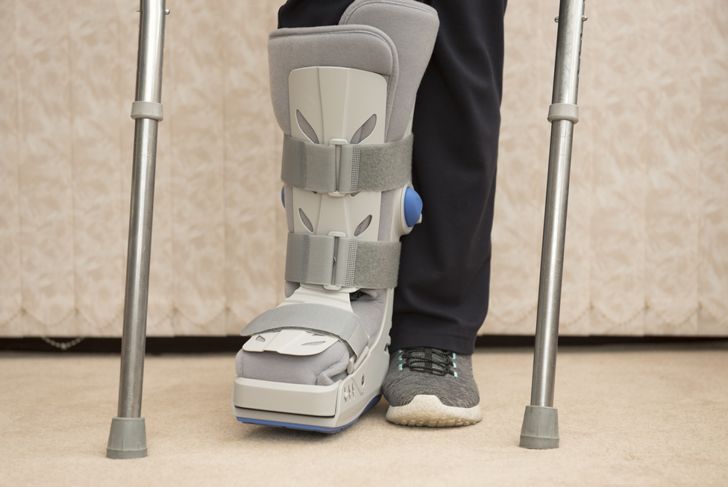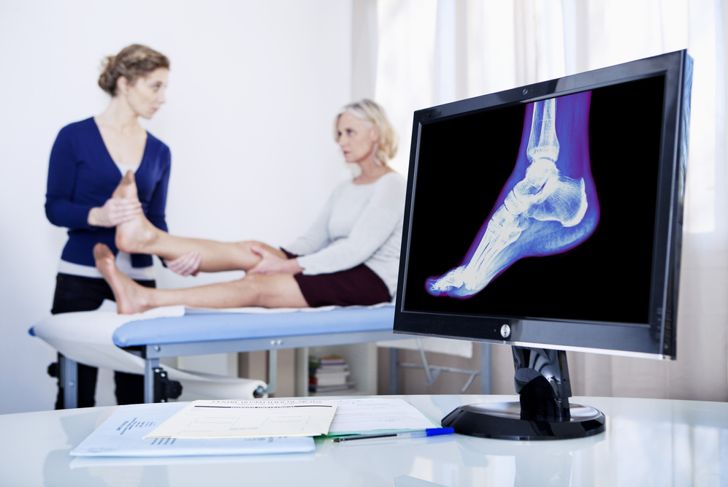Ankle sprains are one of the most common sports injuries, but they can also occur in non-athletes as well. Ankle sprains typically occur when the ankle bends so that your weight lands on the outer edge of the foot, causing the ligaments on the outer side of the ankle to tear. It can also happen in the opposite direction, with the inner ligaments tearing instead. An ankle sprain may last for a few hours or for days, depending on the severity and treatment of the injury. In most instances, they will heal without medical treatment, but it is important to know the symptoms of ankle sprains to differentiate them from other ankle injuries.
Ankle Pain
Ankle sprains are usually very sudden, and you are likely to notice them right away. The first sign is usually a tearing sensation, followed by pain. Depending on the severity of the sprain, you may not be able to put any weight on the ankle without extreme pain. If it is a mild sprain, it will still be tender and painful to touch. To reduce pain, you should rest and take over-the-counter NSAIDs like ibuprofen or naproxen. Decreasing the swelling can help to ease pain and tenderness, which will get you back on your feet sooner.
Swelling
After an ankle sprain occurs, swelling may be one of the early noticeable symptoms. The ligaments in your ankle tear during a sprain, which can lead to inflammation. This swelling is typically painful and may last for several days following the injury. To reduce swelling, take anti-inflammatory medications regularly. Stay off of the joint as much as possible, and elevate your foot when resting. You can also apply a cold compress to the injured ankle, which should help to eliminate the swelling. If the swelling does not decrease on its own after a few days or becomes severe, you should seek medical care.
Bruising
Another common symptom of ankle sprains is bruising. Bruising occurs with most tissue injuries and is typically noticeable 24-48 hours after the injury. The bruise will often be purple or blue, but may not happen with all sprains. Bruising is a result of ruptured blood vessels under the skin, which occurs when the ligament in the ankle is torn. It is often tender to the touch, but it looks more serious than it actually is. Bruises will heal on their own, although ice and over-the-counter pain relievers may reduce some of the tenderness and discoloration.
Inability to Bear Weight
One of the less common symptoms of ankle sprains is an inability to bear weight. After you sprain your ankle, you may find it difficult to walk or stand. If that is the case, it is important not to push yourself to walk despite the pain. In order to prevent future sprains, you should give your ankle time to heal. This means resting and elevating your foot, rather than going about your daily routine. If you must walk, use a cane or other assistive device in order to prevent the weight from being placed on the injured ankle.
Weakness
Even after your ankle begins to heal, you may notice that it is weaker. The joint may roll over again, or you may feel twinges of pain when pressure is placed on it. Tearing the ligament reduces the ankle’s ability to bear weight, and even if you are able to walk on it without consistent, severe pain, you may not get the same support until your ankle is fully healed. Avoid wearing heeled shoes or sandals that do not support the ankle, and consider using an ankle brace or bandage wrap until your ankle is stronger.
Permanent Damage
Those who suffer from one ankle sprain are more likely to suffer another in the future. This is because most people do not allow their ankles to heal properly, and the ligament does not return to its former health. In these patients, it is common for the ankle joint to roll over without a traumatic event occurs. It can happen while descending stairs, wearing unsupportive shoes, or even just walking on flat pavement. Make sure to allow your sprain enough recovery time to properly heal, so that you have less of a risk for this type of long-term damage.
Rest
One of the best things that you can do to treat your ankle sprain is to rest. Keep your foot elevated using a pillow or blankets, and do not walk or put weight on the joint unless you absolutely must. You should also use crutches, a cane, or another assistive device to help reduce the amount of pressure you put on your ankle. Do not attempt to exercise or lift heavy items, which would be too taxing on your weakened joint. Because not properly healing the ankle can result in lifelong complications, it is best to err on the side of caution and avoid all activity.
Anti-inflammatories
Inflammation is the primary cause of pain in an ankle sprain, so treating swelling can help to reduce tenderness. NSAIDs like ibuprofen and naproxen can be purchased at drug or grocery stores, and are an inexpensive way to dull pain and reduce inflammation. Another anti-inflammatory solution is ice, which can help to decrease swelling, especially immediately after the injury. Be careful to wrap the cold compress in a cloth or towel first, to avoid irritating the skin with frostbite. Your doctor may be able to prescribe a stronger medication for pain and inflammation if these milder solutions do not help.
Support
The best way to avoid ankle sprains is also one of the best treatments to heal them. It is important to remember that the ankle is a fragile joint, even though it may seem resilient. You should always wear shoes that provide support for your ankles, but it is especially true with an ankle sprain. As soon as swelling decreases, wear structured boots or high-top shoes that can be laced tightly to provide extra support for your joint. Most drugstores and medical supply stores carry ankle boots that are specifically designed for sprains, which may be the best course of action for a severe injury.
Surgery
Although most ankle sprains heal naturally with rest and time, some patients may need surgery to correct their problems. Surgery to repair the torn ligaments typically only occurs in the most severe cases, when regular treatment has failed to improve the condition. Surgery may also be an alternative if your ankle heals, but has recurring problems with weakness and repeated strains. In these cases, the surgeon can repair the ligaments and help to facilitate proper healing. Your doctor can help you to decide if this kind of treatment plan is necessary for your injury, or whether normal rehabilitation may work instead.

 Home
Home Health
Health Diet & Nutrition
Diet & Nutrition Living Well
Living Well More
More

